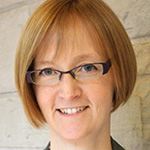fundraising
Metrics and goal-setting for leadership annual giving officers
We’ve been booking major and planned gifts with donors for many years at most of our institutions, and various metrics have risen to the top to track the activities and productivity of major gift officers. We track everything from visits to proposals given to donors, rate at which proposals are accepted, and the number of gifts documented.
Many organizations now have leadership annual giving programs that include annual giving officers heading out on the road or directly contacting donors to seek larger annual commitments. This is a great idea to help build your leadership group, get to know your donors better, and help build your pipeline of future major gift donors. But annual giving is a different animal, and the metrics you use to measure productivity and success for a major gift officer might not work for leadership annual giving officers. What’s the best way to set goals and evaluate a leadership annual giving team?
I asked three experts who are running leadership annual giving programs how they are evaluating their progress when it comes to metrics and goal-setting, and they’ll serve as a panel of sorts on today’s blog.
The panel
Sheri Cole is director of leadership giving at Western University in Ontario, Canada. Sheri began the leadership giving program at Western six years ago and has developed a structured approach to building portfolios and setting goals for gift officers.
Janine Hetherington is director of alumni fund leadership giving at Williams College where she manages a portfolio of individual prospects and has created a formal leadership giving program structure for the alumni fund’s 1,600+ alumni class agents. She aspires to grow her professional staff and develop the college’s first formal leadership gift officer metrics.
Joe Lyons is executive director of leadership gifts, a new and growing program at his alma mater, Cornell University. He has held a variety of roles in development at Cornell since 2002. Most recently, he was the senior director of the Cornell annual fund, leading his team to record-setting growth, reaching more than $36.6 million from over 34,000 donors.
The panel sounds off on leadership annual giving metrics
What motivates you as a gift officer? What seems to motivate your staff?
“I love being able to make the dollar needle move. It’s always exciting to see a jump in the number of gifts at a certain level.”
Joe Lyons, Cornell University: “I think the most successful gift officers are motivated by the thrill of closing a gift. And because of that, they have the hunger to track down leads, be creative in outreach, and keep trying — because they want to see a gift happen.”
Sheri Cole, Western University: “I’m motivated by goals and deadlines, and particularly by meeting donor expectations. If I know a donor is waiting for something from me to make a decision, that is a priority. My leadership gift officers respond well to this, too. They are self-motivated people, and they want to monitor their own progress toward our goals. They are motivated because they’ve seen their own results improve.“
Janine Hetherington, Williams College: “I love being able to make the dollar needle move. It’s always exciting to see a jump in the number of gifts at a certain level—especially after a concentrated effort on a number of asks. I’m probably even more motivated by cracking open new lines of potential leadership donors—digging into different affinity groups or class years, figuring out what motivates them, and creating follow-up communication/solicitation/stewardship that then results in new donors AND increased giving.”
What goals does a full-time leadership annual giving officer have at your institution?
“One key metric I track is booking attempts: the number of prospects you need to contact in order to get a visit.”
Sheri: “Leadership gift officers have two formal goals: number of calls/visits and a revenue goal. Those are the metrics that senior leadership measures. But I track a number of things that feed into that in order to identify potential trouble areas. When I initially moved into this role, I drew on my background in telefundraising and reflected on that model to begin setting goals. I asked myself, ‘What do I have control over to reach my goal?’ One key metric I track is booking attempts: the number of prospects you need to contact in order to get a visit. I want to determine whether the gift officers are getting enough attempts out there, and if they have enough prospects to feed that. I know that on average, my gift officers need to make 8 attempts to get one meeting. That varies, of course. I have a new gift officer who is doing a lot of qualification, and she needs 10 or more attempts to book one visit. I have been working my portfolio for several years now, so I usually only need 4-6 attempts to book a visit.”
Janine: “My role is new at Williams, and metrics were not created in advance of my hire. I have been working to establish goals for myself because I value them and believe when they are thoughtfully created, they can be motivational. In FY15, I set basic goals for number of gifts at each level of our alumni fund giving pyramid. I partnered with our major gift officers and alumni leadership volunteers to exceed those goals at all levels. Our dollar goals are higher for FY16 and my partnership with major gift officers has become more strategic, focusing on key prospects, making sure annual fund asks are part of their metrics, and supporting bundled asks with an alumni fund component for every solicitation.”
Joe: “At Cornell we have a mix of metrics as we expand our program. At this time, we’ve not set dollar goals, but we have set a mix of contact, qualification, and solicitation goals to reflect the mix in the portfolios and the objective of moving prospects from qualification to solicitation quickly. For example, we have set goals not only for outgoing contacts, but also for the percent of prospect pool who are successfully engaged (i.e. those who have reciprocated contact.) Gift officers also have a goal for participation rate within their portfolio, and for adding new donors at the leadership level.”
I also asked the panel about the inclusion of these metrics as part of performance evaluations, and everyone said that they were considered to some degree. One common theme also emerged: focusing gift officers on the right activities was the most important thing given the relative youth of leadership programs at most institutions. According to this panel, leadership annual giving officers tend to have minimum monthly visit expectations that are slightly higher than major gift officers at the same institutions—something I’ve heard from other programs as well.
What is your philosophy on managing and evaluating gift officers?
“Using metrics in a balanced way is really critical. I’ve seen instances where there are no metrics or inconsistent metrics and it makes evaluation difficult or impedes the officer from being motivated.”
Janine: “I am a huge proponent of having baseline metrics (numbers derived from both top-down and bottom-up data analysis) for outreach attempts, qualification and solicitation visits/calls, event planning and attendance. Then, I believe in sitting down during the planning stages for a fiscal year and reviewing goals with each gift officer, asking that person to come up with realistic and stretch goals of their own, then coming to consensus about a plan of attack. I prefer check-ins twice a month with a shared agenda that can be updated as needed (I use Google Keep). These check-ins provide deadlines, accountability, and brainstorming/collaboration time.”
Sheri: “In regard to managing, I feel the important objective is to ensure they have the skills and tools to do their work independently. We provide training, clear directives, and a solid plan including goals and the necessary resources (prospect lists, efficient processes, and access to reports to they can monitor their own work). For evaluating officers, my philosophy is that revenue and call targets are only part of the equation when evaluating someone’s performance. I also track booking attempts to show activity that might not necessarily result in calls. We as a development team are beginning to explore other meaningful metrics. For me, those include tracking number of people we qualify, number of renewals, number of upgrades, and showing how we move people through the fundraising cycle.”
Joe: “Using metrics in a balanced way is really critical. I’ve seen instances where there are no metrics or inconsistent metrics and it makes evaluation difficult or impedes the officer from being motivated. On the flipside, I’ve seen a total reliance on two or three key metrics and officers are sometimes, sadly, motivated to game the system in order to make their numbers. We have to find the right balance between the two so we can successfully reach the outcome we all want—maximizing performance and raising more money to benefit our institution.“
What about your institution? Let’s talk
Leadership annual giving will no doubt continue to grow as an important function in development, and it’s great to see so many colleges and universities embracing this as a key part of the pipeline.
How does your institution set goals for leadership gift officers? What do you and your colleagues do to stay focused and keep that needle moving, as Janine says? Email me and we can “talk shop.” My colleagues and I work with hundreds of institutions each year, so we have plenty of practices and strategies to share. We’d love to hear from you!


